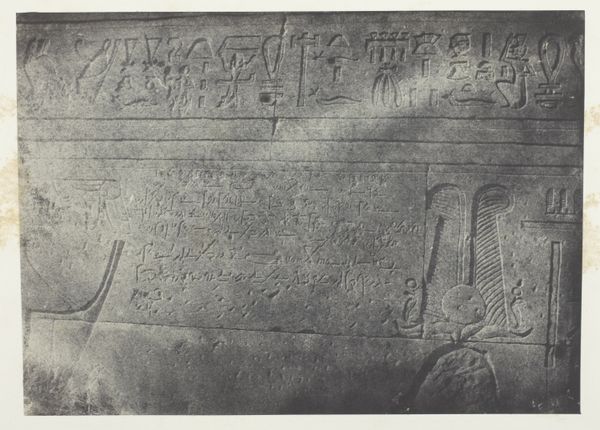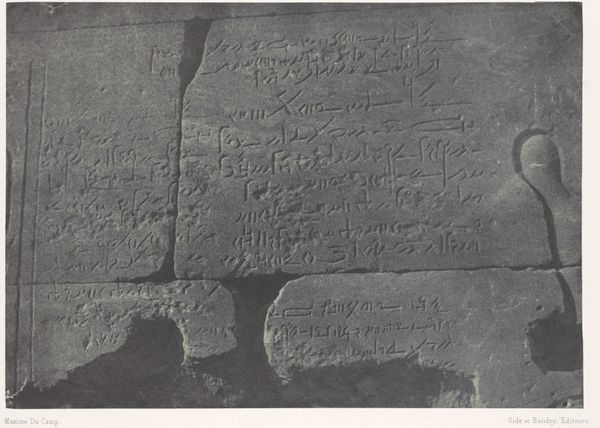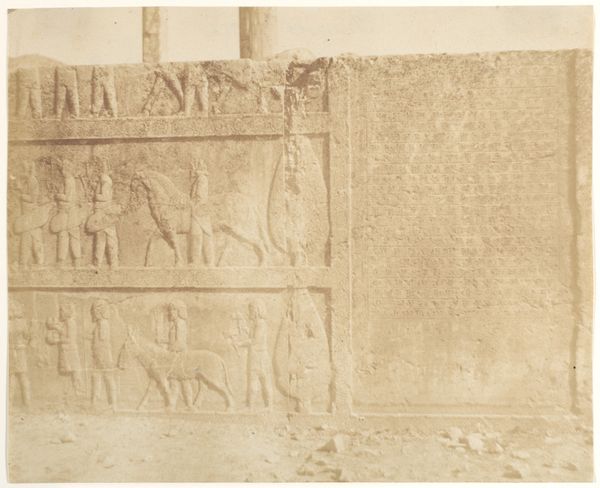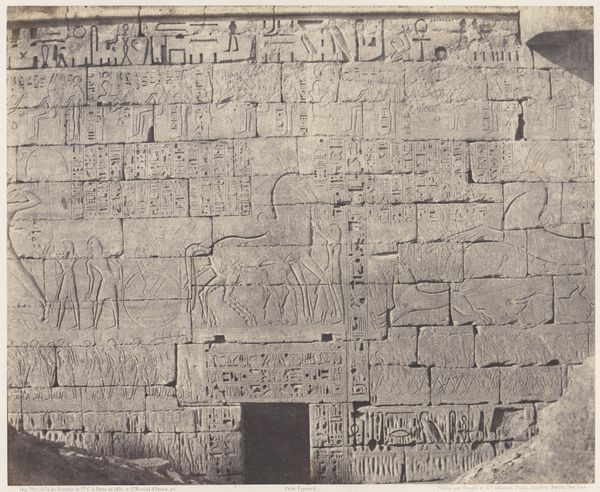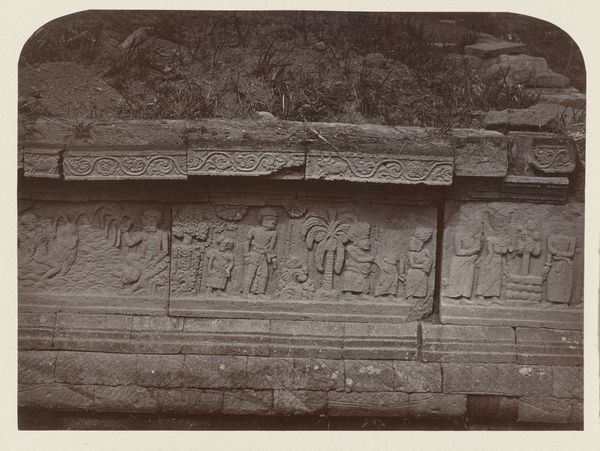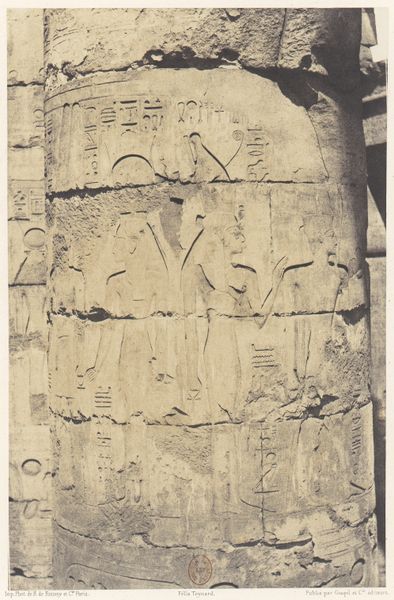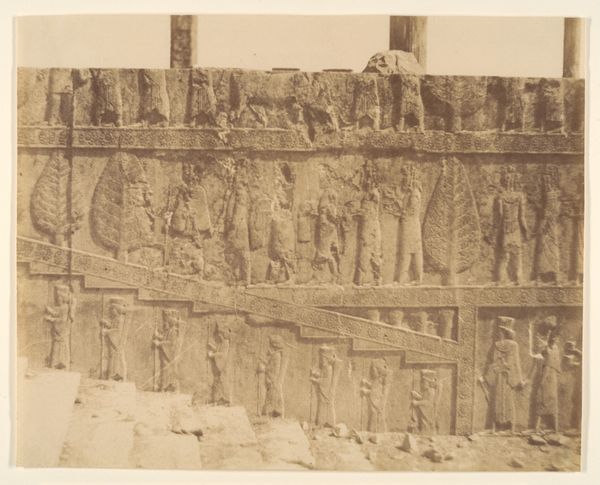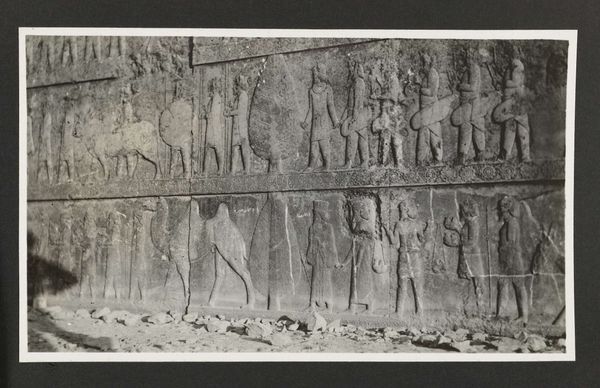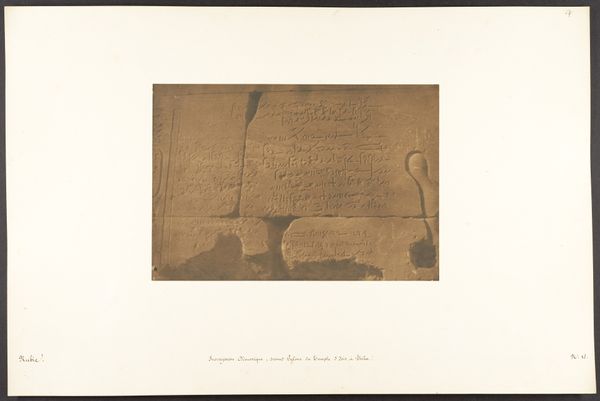
print, relief, photography, sculpture
#
portrait
#
narrative-art
# print
#
relief
#
classical-realism
#
photography
#
carved into stone
#
ancient-mediterranean
#
sculpture
#
history-painting
Copyright: Public Domain
Editor: Here we have Luigi Pesce's 1858 photograph, "Procession on the Facade of the Grand Staircase," currently housed at the Metropolitan Museum of Art. The monochrome tones give the carved figures an otherworldly feel, almost like they're emerging from a forgotten dream. It’s all very linear and rather austere, but captivating, nonetheless. What story do you think it's trying to tell us? Curator: Ah, a photographic echo of ancient echoes! You know, looking at this image, I am immediately transported to a world of bas-reliefs, the visual language of power and ritual. It feels archaeological, as if Pesce isn’t just documenting sculpture, but a recovered moment in time. Consider how photography itself, still nascent in 1858, becomes a tool to reanimate the distant past. Does that change how you perceive it? Editor: Absolutely! The sepia tones reinforce the feeling of historical distance. It's like holding a memory, but... I'm wondering, are these figures portraits or symbolic representations? Curator: Excellent question! It's a bit of both, I think. They likely depict historical figures or deities but rendered according to conventions intended to project authority. It is a representation that seeks to capture both likeness and idea. Can you sense that tension? Editor: I can now! The blend of representation and symbolism, preserved through both the sculpture itself and the photograph, it offers a richer story than I initially expected. I love how different layers of time converse with each other. Curator: Precisely! Pesce's work here has taught me, once again, that looking backward can unexpectedly illuminate our present, even transform it, I’d say. A delightful discovery.
Comments
No comments
Be the first to comment and join the conversation on the ultimate creative platform.
